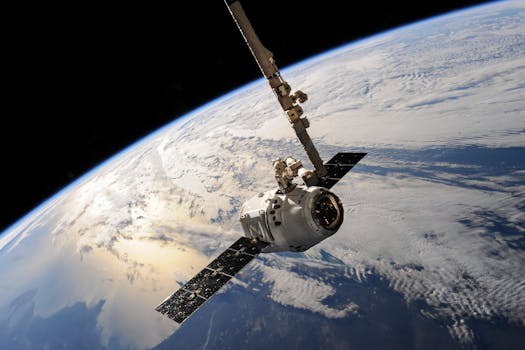The Future of Satellites: Revolutionizing Global Connectivity
The future of satellites is poised to revolutionize global connectivity, enabling faster and more reliable communication services. With advancements in space technology, satellites are becoming increasingly important for a wide range of applications, from navigation and remote sensing to communication and weather forecasting.

The Future of Satellites: Revolutionizing Global Connectivity
The future of satellites is a rapidly evolving field, with significant advancements being made in recent years. As the world becomes increasingly dependent on digital technologies, the demand for reliable and high-speed connectivity is growing exponentially. Satellites are poised to play a critical role in meeting this demand, enabling faster and more reliable communication services for a wide range of applications.
Introduction to the Future of Satellites
Satellites have been a crucial part of modern telecommunications infrastructure for decades, providing a means of transmitting data, voice, and video signals over long distances. However, traditional satellite technology has several limitations, including high latency, limited bandwidth, and high costs. The future of satellites is focused on overcoming these limitations, with the development of new technologies and innovations that are set to transform the industry.
One of the key drivers of the future of satellites is the growing demand for global connectivity. As the world becomes increasingly interconnected, the need for fast and reliable communication services is growing rapidly. Satellites are well-positioned to meet this demand, with the ability to provide coverage to remote and underserved areas, as well as to support a wide range of applications, from navigation and remote sensing to communication and weather forecasting.
Advancements in Space Technology
Advancements in space technology are a critical component of the future of satellites. In recent years, there have been significant breakthroughs in areas such as satellite design, launch technology, and propulsion systems. These advancements have enabled the development of smaller, more efficient, and more cost-effective satellites, which are set to revolutionize the industry.
One of the most significant advancements in space technology is the development of small satellites, also known as smallsats. Smallsats are miniature satellites that are typically launched into low Earth orbit, where they can provide a wide range of services, including communication, navigation, and remote sensing. Smallsats are significantly smaller and less expensive than traditional satellites, making them an attractive option for a wide range of applications.
Another key area of advancement is in the field of launch technology. Traditional launch vehicles are expensive and often have long lead times, which can make it difficult to launch satellites quickly and efficiently. However, the development of new launch vehicles, such as reusable rockets, is set to transform the industry. Reusable rockets are capable of launching satellites into orbit and then returning to Earth, where they can be refurbished and launched again. This technology has the potential to significantly reduce the cost of launching satellites, making it more accessible to a wide range of organizations and individuals.
Applications of the Future of Satellites
The future of satellites has a wide range of applications, from communication and navigation to remote sensing and weather forecasting. One of the most significant applications of the future of satellites is in the field of communication. Satellites are capable of providing high-speed internet connectivity to remote and underserved areas, which is critical for a wide range of applications, including education, healthcare, and commerce.
Another key application of the future of satellites is in the field of navigation. Satellites are used to provide location information and timing signals, which are critical for a wide range of applications, including aviation, maritime, and transportation. The future of satellites is set to enable even more precise and reliable navigation services, with the development of new technologies such as satellite-based augmentation systems.
The future of satellites also has significant implications for the field of remote sensing. Satellites are capable of providing high-resolution images of the Earth’s surface, which are critical for a wide range of applications, including agriculture, environmental monitoring, and disaster response. The future of satellites is set to enable even more advanced remote sensing capabilities, with the development of new technologies such as hyperspectral imaging and synthetic aperture radar.
Conclusion
In conclusion, the future of satellites is a rapidly evolving field, with significant advancements being made in recent years. The demand for global connectivity is growing exponentially, and satellites are poised to play a critical role in meeting this demand. With advancements in space technology, the development of new applications, and the growing demand for satellite services, the future of satellites is set to be an exciting and transformative period for the industry.




